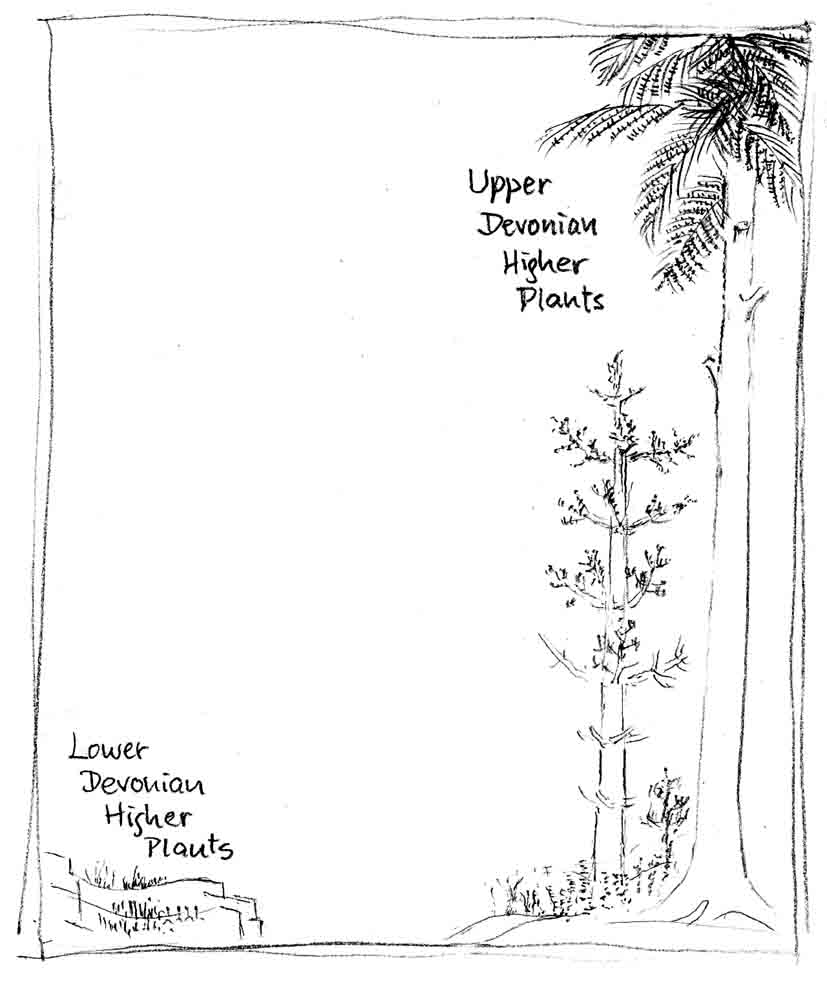Higher Plants
The term "Higher Plants", roughly said,
covers all plants which can be "planted": all trees, shrubs,
flowering herbs, ferns and fern relatives. The separation into Higher
Plants and Lower
Plants is based on reasons more traditional and
practical than fundamental. Moss-like
plants and Green
Algae are closer related to the Higher Plants than to the
vast variety of the other Lower Plants which they have been assorted
with.

Higher Plants are also called "Vascular
Plants", which refers to a level of organisation distinguished by the
presence of special tissues, notably
those facilitating transport inside the plant.
There are good reasons to assume that all Higher Plants have
evolved
from some species of early terrestrial plants of a Silurian flora
similar to the well preserved Lower Devonian flora of the Rhynie chert
with its 7
Higher Plant species found hitherto.
The
size of the Higher Plants increased hugely during the Devonian:
The small leafless plants of the Lower Devonian had developed into
impressive trees by the end of the Devonian. This amazing development
greatly changed the aspect of the Earth.
Beautiful illustrations of Devonian landscapes are shown in "When Fish
Got Feet ..." by Hannah
Bonner .
The moss-like plants never made it much above the ground, so they were
left on the other side of the artificial divide separating Higher and
Lower.
The
Higher Plants are often simply called Land Plants although quite
a number of them have returned to a submerged way of life, and some
have even developed an alga-like aspect, fitting to their habitat.
The
terminology is confusing since several small alga species have
managed to live on dry land, and a few descendants of the big Higher
Plants of the Palaeozoic have reduced their size greatly so that the
smallest Flowering Plant is now a mere green lenticular blob of 1mm
across.
